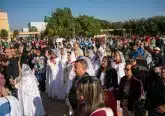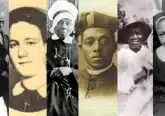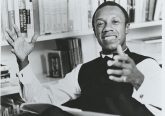Meet the 6 American Black Catholics who are on the road to sainthood
Newport Beach, California, Feb 28, 2023 / 12:55 pm
Among the history revisited for Black History Month, Catholics would do well to recall that there are currently six African American Catholics who are on the path to sainthood.
Archbishop Timothy Broglio of the Archdiocese for the Military Services, USA, who serves as president of the U.S. Conference of Catholic Bishops, recalled these holy lives last month, stating: “For models of lives transformed, we can always turn to the saints. To this end, the USCCB has advanced beatification and canonization causes of six inspirational African American men and women: Venerable Pierre Toussaint, Servant of God Mother Mary Lange, Venerable Henriette DeLille, Venerable Augustus Tolton, Servant of God Julia Greeley, and Sister Thea Bowman.”
Among the best known of these six is Father Augustus Tolton (1854-1897), the first recognized American Black priest. He was born a slave in Missouri and escaped to Quincy, Illinois, through the Underground Railroad. Some Irish priests recognized he had a vocation to the priesthood, so he studied in Rome and was ordained a priest. He returned to Illinois, serving much of the time in Chicago before his death at age 43.
Despite having endured prejudice and obstacles to ordination, he remained committed to Christ.
“I believe Tolton says something about how we handle disappointment in our lives — protracted disappointment and how we struggle with that, companioned with the inspiration that comes from our Christian faith,” Auxiliary Bishop Joseph Perry of Chicago, postulator for Tolton’s cause for canonization, told the Register via email.
He continued: “Despite the suffering endemic to 19th-century America and its ambivalence about the presence and participation of Black people in our democracy, Tolton proved a priest servant to any and every one, white, black, brown, etc., but met up repeatedly with objection and resentment from individuals and corridors of our society and the Church.”
“The cross of Jesus impresses itself upon our lives in more ways than [are] comfortable for us. But we believe in the Resurrection,” Perry added. “Salvation is constantly working itself out in our lives. To know Jesus is to know him with the cross. To know Christ and his kingdom is to arrive there with our faith, hope, and love intact.”
“Father Tolton gave himself completely to the Church in response to God’s invitation to share in his life and love,” Deacon Harold Burke-Sivers, author of “Father Augustus Tolton: The Slave Who Became the First African-American Priest,” told the Register of the “Venerable.”
“He is a role model for all those who seek to be configured more perfectly to Christ. Father Tolton’s life bears witness to the truth that, when we freely, willingly, and lovingly place all our trust in God, then we will find true happiness and peace.”
Among the best-known women American Black candidates for sainthood is Venerable Henriette DeLille (1813-1862), founder of the Sisters of the Holy Family in New Orleans. She was born in New Orleans; her father was from France, and her mother was a free woman of African descent. She applied to both the Ursuline and Carmelite communities but was rejected, so she used her family money to found her own community, which cared for the sick and poor as well as opened schools. She is the first native-born American of African descent whose cause for canonization was opened.
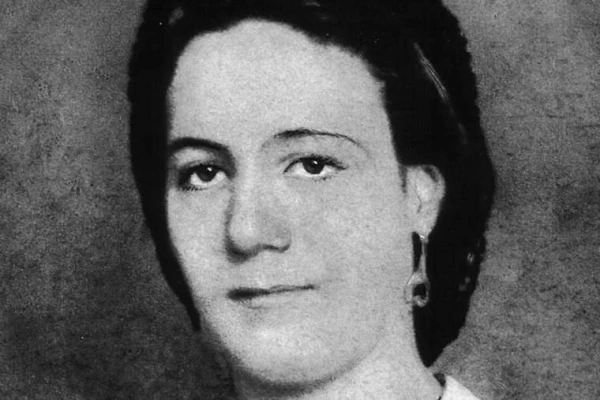
Father Josh Johnson, a priest of the Diocese of Baton Rouge, Louisiana, who formerly taught theology of the body catechesis at the Sisters of the Holy Family’s St. Mary’s Academy in New Orleans, explained to the Register that both Tolton and DeLille were inspirations for him “in my walk toward eternity.”
“Both of these holy witnesses were devoted to Jesus Christ in the Blessed Sacrament and the poorest of the poor,” he said. “Even though they were persecuted by many of the leaders in the Catholic Church during their lifetime for no other reason than because of the color of their skin, they both continued to glorify God by pouring themselves out in ministry for the salvation of souls.”
He noted that Tolton’s example inspired him to do a daily Holy Hour. He added: “It is amazing how the witness of the saints continues to bear supernatural fruit in the 21st century.”
In 2016, Denver Archbishop Samuel Aquila opened the cause for canonization of Servant of God Julia Greeley, a freed slave from Missouri who died in 1918. She moved to Denver, converted to the Catholic faith, and was known for pulling around a red wagon filled with items — such as food, clothing, and firewood — which she would give to the poor. Father Blaine Burkey, Greeley’s biographer, told the Register: “She loved others, feeding the poor, clothing the naked, and providing fuel for their homes. If someone was sick, she’d come to the house and help take care of them.”
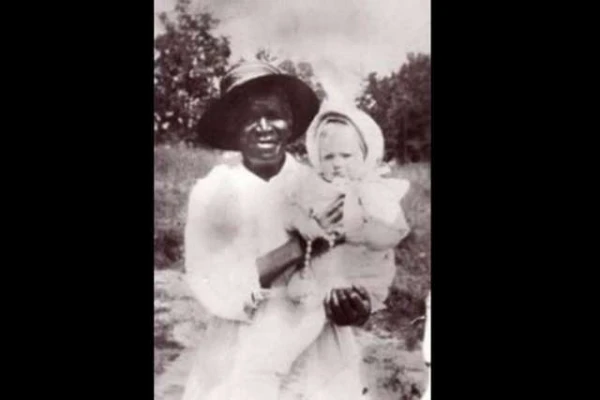
In describing Greeley, Burkey cited the words of Fellowship of Catholic University Students founder Curtis Martin: “Born a slave, half-blind, poor, the object of racism, and alone, Julia simply lived the Gospel of Jesus Christ and loved. Even though she had very little of the world’s material blessings to share, she gathered what she could and shared all that she had from a heart completely transformed by Christ.”
What most impresses him about Greeley, Burkey continued, is “the largesse of her extending Christ’s love in salvific response to the life of crosses others had laid on her.”
Servant of God Sister Thea Bowman (1937-1990) is a Catholic convert from Mississippi. She was a teacher, public speaker, musician, and woman religious who founded the National Black Sisters’ Conference. The Diocese of Jackson opened the cause for her canonization in 2018.
Mary Woodward, chancellor of the Diocese of Jackson, told the Register that Bowman was “a tower of strength and powerful witness to the Gospel of Jesus Christ.”
“She continually labored to bring people to the table to learn more about the dynamic role of African American spirituality in the Church, especially liturgical spirituality. She was tireless in her efforts to raise an awareness among African American Catholics of their inherent worth in the Church and their unique gifts to the Church,” she continued.
Venerable Pierre Toussaint (1766-1853) was born in Haiti and came to New York City as a slave. He became a hairdresser. He prospered and was able to secure his freedom. He was a daily communicant, and with his wife, Marie Rose Juliette, engaged in a variety of charitable works. New York’s Cardinal John O’Connor initiated his cause for canonization in 1991, and Toussaint was declared “Venerable” by Pope John Paul II in 1996.

Toussaint’s remains are interred in New York’s St. Patrick’s Cathedral in the cathedral crypt alongside of New York’s most prominent Catholic leaders, the only layman afforded this privilege. O’Connor said: “He is now buried beneath this high altar with all of the bishops, archbishops, and cardinals of New York. It will be a great privilege for me to be buried in a vault in the same section with Pierre Toussaint.”
Servant of God Mother Mary Elizabeth Lange (1789-1882) was born in Cuba and emigrated to Baltimore. With a friend, she opened a school for Black children. She became the founder and superior general of the Oblate Sisters of Providence, the first congregation of women religious for women of African heritage. In 1991, Baltimore’s Cardinal William Keeler introduced her cause for canonization.
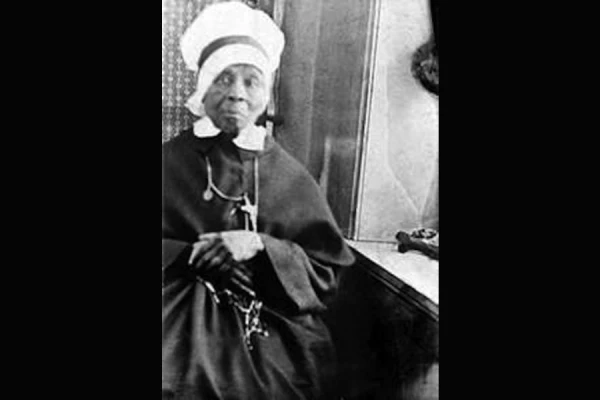
The Mother Mary Lange Guild notes in an online biography that “Mother Mary Lange practiced faith to an extraordinary degree. In fact, it was her deep faith which enabled her to persevere against all odds. To her Black brothers and sisters, she gave of herself and her material possessions until she was empty of all but Jesus, whom she shared generously with all by being a living witness to his teaching.”
Her legacy lives on in the Black religious orders in the U.S. Church today.
As EWTN’s Mark Irons reported on “EWTN News In Depth” this week: “Going back to 1863, in the heat of the Civil War, President Abraham Lincoln declared freedom for many enslaved African Americans with his historic Emancipation Proclamation. But before that, the founder of the Oblate Sisters of Providence, Mother Mary Lange, broke a racial barrier way ahead of her time, and she’s now on the path to possible sainthood. Her mission began right here, in Baltimore, with the founding of this school. More than 30 years before President Abraham Lincoln signed the Emancipation Proclamation, Mother Mary Lange established St. Frances Academy because she believed African American children had the right to an education. And a year later, in 1829, her first group of Oblate Sisters of Providence came together, making vows — embracing a life of service to God and the vulnerable in society, while rejecting racism and accepting those deemed unworthy at the time.”
As Irons explained, Oblate Sister Mary Pauline Tamakloe was inspired to join the order “when she learned about the determination of founder Mother Mary Lange.”
“She often visits the same Person Mother Lange did: Jesus, under the form of eucharistic Bread,” Irons said, adding that “one of the founder’s quotes is: ‘Hasten to the Blessed Sacrament.’ Sister Mary Pauline follows that advice, and that is where she finds her strength.”











